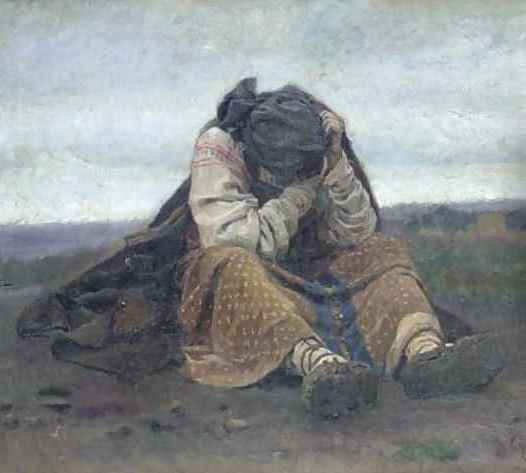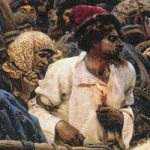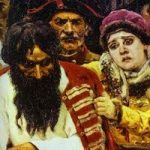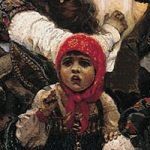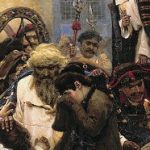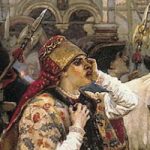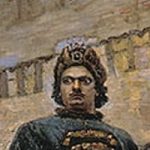Editor’s Note: We are thrilled that the “verge of apocalypse” has not resulted in the loss of the following post, that it is, in fact, being read by you. Thank you for reading.
—
According to the Weekly World News, I am writing on the verge of apocalypse and this blog post will never be read. The nineteenth of December: two days until we reach the terminus of the ancient Mayan calendar and find ourselves ushered into a future better left to the imagination of Roland Emmerich. Or Nancy Lieder. Or John of Patmos.
Or whomever. Apocalypses come and go, and if some prophets, like the Revelator or Nostradamus, achieve a more lasting fame than others, it seems to have little to do with their accuracy as doomsayers.
What’s worth noting about our latest onrushing apocalypse, however, is just how timely it seems. We’ve entered a holiday season in which the end of the world feels despairingly close. The days are short and gray. Crows flock through Ann Arbor in clannish, coughing mobs. The weather here has been eerily warm; the sky refuses to snow. Three days ago at dusk, a small formation of geese sliced over my yard at treetop height. I counted five—which, since Canada geese mate for life, means that one had been lost. Its partner flew alone.
But the problem is not merely seasonal; it’s not just a trick of perception. At home, children have died in the most horrifying manner imaginable. (And perhaps we squirm with guilt when we consider what little fuss we were making just a few weeks ago, when the youngest victims of gun violence were mostly members of the urban poor.) Abroad, our drones “double tap” the targets of Hellfire strikes, so that would-be rescuers and mourners are murdered along with the intended victims. These are the truths we must sit with on these long winter evenings.
At the end of King Lear, when Lear staggers onstage with the body of Cordelia in his arms, loyal Kent gapes in horror: “Is this the promis’d end?” Given the world around us, none of us could be blamed for taking up his cry.
In St. Petersburg, Russia, nine hours closer to the promised end than I am where I sit, it is already the twentieth of December, the anniversary of another seismic shift heralded by some as the end of the world. On December 20, 1699, Peter the Great proclaimed that the new year would henceforth be celebrated in January instead of September. Moreover, this new year, when it arrived, would be numbered 1700, not 7208. In other words, Russia would no longer calibrate its calendar from the date of the Creation. In this way it would become, like the rest of Europe, modern—a word that has long been feared and reviled by some.
This proclamation was characteristic of Peter the Great, who smashed the vestiges of Kievan Rus and reassembled the pieces in his own image. As a young man, he toured the great cities of the West, immersing himself in their court cultures and studying their feats of engineering. Upon his return, he instituted sweeping reforms—professionalizing the army, subordinating the Orthodox Church to a secular bureaucracy, mandating shaved cheeks and Germanic dress for state servants. He warred with the Swedes for access to the Baltic, drained the marshy mouth of the Neva with dikes as he’d seen the Dutch do, and moved the Russian capital decisively into Europe proper. For centuries, Muscovy had cast itself as separate from the fallen West, a third and final Rome, the last bastion of true Christendom. Peter ended that. First the streltsy, peasant musketeers, rose in revolt, then the Bashkirs, then the Cossacks. The Old Believers turned their backs. He was the Antichrist, they said. He staged mass executions, leaving bodies to rot in the gibbets for months. He imprisoned his half-sister Sophia, exiled his first wife Eudoxia, and had his son Alexei tortured to death. Outside his new capital, he constructed a splendid summer palace, with fountains and gardens descending toward the sea.
In 1881, Vasily Surikov turned to this history in his first great painting, The Morning of the Execution of the Streltsy. It is a massive canvas, three by two meters, and though at first glance it may appear chaotic, it is in fact carefully arranged. Like much of Surikov’s work, it is intensely narrative, capturing not simply a frozen moment but an entire arc. At the left of the composition is a red-bearded strelets, bound for execution; at the right is Peter himself, on horseback; the composition proceeds horizontally along the shared axis of their locked glares, their mutual hate. And as the viewer is drawn from left to right, she is drawn forward in time, counting down the minutes to execution—that horrible word, gibbeting. As Soviet art historian Vladimir Kemenov puts it, “The closer our eye gets to the emperor, the more energetically the Preobrazhensky guardsmen tend to the condemned and the less time [the condemned] have remaining to live.”
 Peter and the red-bearded strelets are implacable, avatars of grand historical forces. The figures around them, guided less by principle or analysis than by heartfelt emotion—the remaining streltsy, their families, the onlookers, even the guardsmen—evince a chorus of more subtly shaded humanity. As a snapshot of social upheaval that, in its fratricidal violence, must have felt apocalyptic to so many involved, The Morning of the Execution of the Streltsy remains utterly relevant to our world today.
Peter and the red-bearded strelets are implacable, avatars of grand historical forces. The figures around them, guided less by principle or analysis than by heartfelt emotion—the remaining streltsy, their families, the onlookers, even the guardsmen—evince a chorus of more subtly shaded humanity. As a snapshot of social upheaval that, in its fratricidal violence, must have felt apocalyptic to so many involved, The Morning of the Execution of the Streltsy remains utterly relevant to our world today.
One of the Peredvizhniki, the Wanderers, who sought to bring art to the masses during an era of incomplete reforms amid institutional ossification and decay, Vasily Surikov executed only nine major canvases in his lifetime. Dying of heart failure at the age of sixty-eight, he whispered, “I am disappearing.” This was in the winter of 1916. Days later, the Russian army attempted a disastrous offensive against the Germans in Belarus; before the end of the year, Rasputin was assassinated. In March 1917, Tsar Nicholas II, last of the Romanov Dynasty to which Peter the Great belonged, abdicated his throne.
The word “apocalypse” is derived from the Greek apokálypsis, meaning an act of revelation or uncovering. Vasily Surikov “disappeared” on the eve of an apocalypse that revealed the iniquities, the inequities, and the ultimate unsustainability of Russian society as it had been theretofore constituted.
This revelation was presaged by Surikov’s work. The seeds of it can be found in the faces of his peasants and royalty, his soldiers and children—their rage and hate, their terror and grief, their curiosity and sympathy and confusion. Surikov turned to a historical moment in order to reveal his own, and he found in these faces an incipient narrative, poised to grow, to become the future.
If you’re reading this, then the winter solstice has come and gone and another promised end has failed to materialize. But perhaps we’re experiencing a different sort of apocalypse. Perhaps, day by day, we are suffering a revelation. And if this is so, it’s worth wondering what the faces of our villains and victims, our leaders and bystanders, our friends and neighbors, our chosen enemies, and ourselves—caught up as we all are, together, in the events of this dim, bloody season—might reveal about the shape of the world to come.
If you’re looking for prophecies, that’s where they lie.

